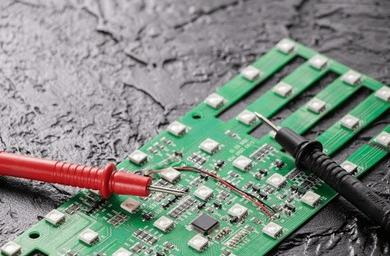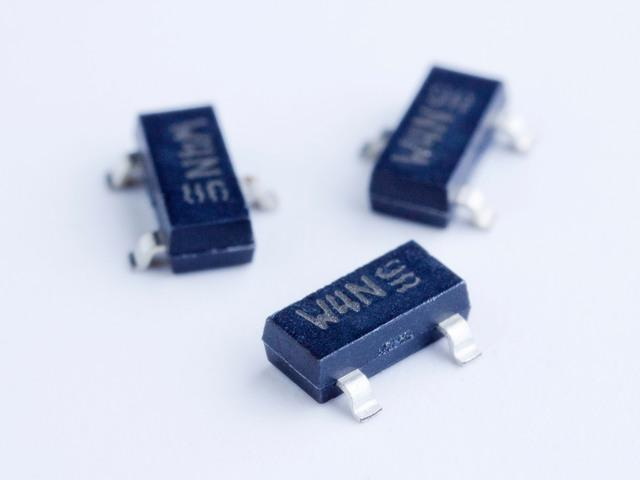Content Menu
● Understanding SMT Production Lines
● Initial Planning and Design
>> Assessing Production Requirements
>> Selecting the Right Equipment
● Layout and Workflow Optimization
>> Designing an Efficient Layout
● Implementing Automation
>> Enhancing Precision and Efficiency
● Quality Control Measures
>> Establishing Quality Assurance Protocols
● Challenges in Setting Up an SMT Line
>> Managing Production Volume
>> Ensuring Component Quality
● Case Study: Successful Implementation
● Conclusion
● FAQ
>> Q1: What is Surface Mount Technology (SMT)?
>> Q2: What equipment is essential for an SMT production line?
>> Q3: How can I ensure quality control in my SMT process?
>> Q4: What are common challenges when setting up an SMT line?
>> Q5: How important is automation in an SMT production line?
● Citations:
Setting up a wholesale automatic Surface Mount Technology (SMT) production line is a complex yet rewarding endeavor that can significantly enhance manufacturing efficiency and product quality. This guide will explore the essential steps, equipment, and best practices needed to establish a high-performing SMT production line.

Understanding SMT Production Lines
SMT is a method used to mount electronic components directly onto the surface of printed circuit boards (PCBs). The production line typically consists of several key stages:
- Solder Paste Printing: Applying solder paste to the PCB pads.
- Component Placement: Accurately placing components onto the solder paste.
- Reflow Soldering: Melting the solder paste to create electrical connections.
- Inspection: Verifying the quality of the assembly through automated optical inspection (AOI) or manual checks.
Each stage is critical for ensuring the final product meets quality standards and performs reliably.
Initial Planning and Design
Assessing Production Requirements
Before setting up an SMT line, it's crucial to assess your production needs. Consider factors such as:
- Type of Products: Determine the types of PCBs you will be producing and their complexity.
- Production Volume: Estimate the number of units you plan to manufacture daily or weekly.
- Quality Standards: Define the quality metrics that your products must meet.
This information will guide your decisions regarding equipment selection and layout design.
Selecting the Right Equipment
Investing in high-quality equipment is vital for the success of your SMT production line. Key components include:
- Solder Paste Printer: Essential for applying solder paste accurately on PCB pads. Look for printers with advanced features like automatic alignment and inspection capabilities.
- Pick-and-Place Machine: This machine places components onto the PCB with precision. Consider machines that offer high speed, flexibility in handling various component sizes, and easy programming.
- Reflow Oven: After component placement, PCBs pass through a reflow oven where solder is melted. Choose ovens that provide precise temperature control and uniform heating profiles.
- Automated Optical Inspection (AOI) System: AOI machines inspect PCBs for defects such as misaligned components or insufficient solder. Implementing AOI early in the process can prevent defective products from reaching later stages.
Layout and Workflow Optimization
Designing an Efficient Layout
The layout of your SMT production line should facilitate a smooth flow of materials and minimize handling times. Consider the following:
- Linear Flow: Arrange equipment in a linear sequence from solder paste printing to inspection. This minimizes backtracking and reduces cycle times.
- Adequate Spacing: Ensure there is enough space between machines for maintenance access and operator movement, reducing bottlenecks during production.
- Ergonomics and Safety: Design workstations that prioritize operator comfort to enhance productivity and reduce injury risks.
Implementing Automation
Enhancing Precision and Efficiency
Automation plays a pivotal role in maximizing performance in an SMT production line. Here are some key areas where automation can be beneficial:
- Automated Material Handling: Use conveyors or automated guided vehicles (AGVs) to transport PCBs between stations, reducing manual handling time.
- Data Integration Systems: Implement Manufacturing Execution Systems (MES) that connect all machines on the production line. This integration allows real-time monitoring of production metrics, enabling quick adjustments to optimize performance.
- Predictive Maintenance Tools: Utilize sensors and data analytics to monitor machine health and predict failures before they occur, minimizing downtime.

Quality Control Measures
Establishing Quality Assurance Protocols
Quality control is critical in SMT manufacturing. Implement these measures:
- In-line Inspection Systems: Use SPI (Solder Paste Inspection) systems immediately after solder paste application to ensure correct paste thickness and alignment before component placement.
- Regular Calibration of Equipment: Schedule routine maintenance and calibration for all machines to ensure they operate at peak performance levels.
- Training Programs for Operators: Invest in continuous training for your workforce to keep them updated on best practices, new technologies, and troubleshooting techniques.
Challenges in Setting Up an SMT Line
While establishing an SMT production line can be rewarding, several challenges may arise:
Managing Production Volume
Balancing high production volumes with flexibility can be difficult. Consider modular equipment setups that allow quick reconfiguration for different products without extensive downtime.
Ensuring Component Quality
The quality of components significantly impacts the final product. Establish strong relationships with reputable suppliers and implement strict incoming inspection protocols to ensure component reliability.
Case Study: Successful Implementation
To illustrate these principles in action, consider XYZ Electronics, which recently set up a new wholesale SMT line. They focused on:
1. Conducting thorough market research to understand demand.
2. Selecting high-performance equipment tailored to their specific product types.
3. Designing a streamlined layout that facilitated efficient workflows.
4. Implementing robust training programs for their staff.
As a result, XYZ Electronics increased their production capacity by 40% while maintaining high-quality standards, demonstrating the effectiveness of careful planning and execution in setting up an SMT line.
Conclusion
Setting up a wholesale automatic SMT production line requires careful planning, strategic equipment selection, and ongoing optimization efforts. By focusing on efficiency, quality control, and automation, manufacturers can achieve significant improvements in productivity and product reliability. As technology continues to advance, staying informed about new developments will be essential for maintaining competitiveness in the electronics manufacturing industry.

FAQ
Q1: What is Surface Mount Technology (SMT)?
SMT is a method used in electronics manufacturing where components are mounted directly onto the surface of PCBs instead of being inserted into holes as with traditional through-hole technology.
Q2: What equipment is essential for an SMT production line?
Key equipment includes solder paste printers, pick-and-place machines, reflow ovens, automated optical inspection systems, and conveyors for material handling.
Q3: How can I ensure quality control in my SMT process?
Implement in-line inspection systems like SPI and AOI, conduct regular equipment maintenance, and train operators on quality assurance practices.
Q4: What are common challenges when setting up an SMT line?
Challenges include managing production volumes while maintaining flexibility, ensuring component quality from suppliers, and integrating new technologies effectively into existing workflows.
Q5: How important is automation in an SMT production line?
Automation enhances precision, reduces labor costs, improves efficiency by streamlining processes, and allows for real-time monitoring of production metrics.
Citations:
[1] https://de.hct-smt.com/blog/wholesale-led-smt-production-line--revolutionizing-the-led-manufacturing-industry
[2] https://www.smtfactory.com/Essential-Steps-for-SMT-Production-Line-Setup-id49117676.html
[3] https://www.juki.co.jp/smt/en/web-expo/mi/
[4] https://ventureoutsource.com/contract-manufacturing/setting-up-electronics-manufacturing-smt-pcb-assembly-lines/
[5] https://www.wevolver.com/article/smt-process
[6] https://www.viasion.com/blog/smt-manufacturing-process-step-by-step-guide/
[7] https://www.smtfactory.com/Unveiling-the-Secrets-of-SMT-Line-Process-Optimization-id45117676.html
[8] https://faroads.com/start-smt-line-guide-2024/
[9] https://www.venture-mfg.com/smt-manufacturing/
[10] https://ventureoutsource.com/contract-manufacturing/setting-up-electronics-manufacturing-smt-pcb-assembly-lines/
[11] https://quality-line.com/smt-analytics/
[12] https://etasmt.en.made-in-china.com/product/lKMJnhoWgiRI/China-Cost-Effective-Full-Automatic-SMT-Production-Line-PCB-LED-Assembly-Machine-with-High-Performance.html
[13] https://www.sunzontech.com/how-to-choose-smt-production-line-configuration-scheme/
[14] https://www.adoptsmt.com/en/efficiency-enhancement-in-smt-manufacturing/
[15] https://etasmt.en.made-in-china.com/product/lvhxHUfEYSkX/China-High-Performance-Automatic-SMT-SMD-Production-Line-Machines-for-Smart-Factory.html
[16] https://faroads.com/start-smt-line-guide-2024/
[17] https://www.smtfactory.com/Optimizing-Efficiency-Strategies-for-A-Smooth-SMT-Line-Production-Process-id47463586.html
[18] https://www.alibaba.com/showroom/automatic-smt-led-assembled-line.html
[19] https://www.smtfactory.com/Perfecting-Your-SMT-Line-Layout-for-Efficiency-id47017676.html
[20] https://global.yamaha-motor.com/business/smt/concept/recipe/
[21] https://www.neodensmt.com/other-products/mini-automatic-smt-pick-and-place-machine.html
[22] https://alimco.in/WriteReadData/UserFiles/file/Specification3MR3.pdf
[23] https://smt.asmpt.com/en/products/software-solutions/works/works-optimization/
[24] https://inbusiness.aliexpress.com/wholesale/smt-pick-and-place.html
[25] https://www.youtube.com/watch?v=ISUOGHvOcKE
[26] https://www.smthelp.com/methods-and-measures-to-improve-the-production-efficiency-of-smt-production-line
[27] https://www.reddit.com/r/manufacturing/comments/1ah3v8j/smt_electronics_line_break_even_point/
[28] https://www.itechsmt.com/blogs/news/smt-equipment-list-for-your-new-smt-manufacturing
[29] https://www.opulo.io/blogs/articles/setting-up-a-mid-scale-smt-line
[30] https://www.pcbcart.com/article/content/qa-about-smt-assembly.html
[31] https://levisonenterprises.com/your-surface-mount-technology-questions-answered/
[32] https://www.nextpcb.com/tech-center/smt-assembly-questions-and-answers
[33] https://www.pcbcart.com/article/content/smt-process-to-cost-reduction.html
[34] https://global.yamaha-motor.com/business/smt/faq/
[35] https://www.manncorp.com/blogs/learning-center/how-to-start-pcb-assembly-at-your-facility-without-the-hassle
[36] https://www.linkedin.com/pulse/ins-outs-setting-up-smt-factory-prototype-pcb-assembly-yljdc
[37] https://www.youtube.com/watch?v=y0Qk8nNxyXY
[38] https://www.neodensmt.com/smt-spare-parts/automatic-feeder.html
[39] https://m.smt11.com/blog/SMT-Field/What-You-Need-to-Know-Before-Setup-an-SMT-Factory-4280.html
[40] https://versae.com/smt-assembly-faq/




















